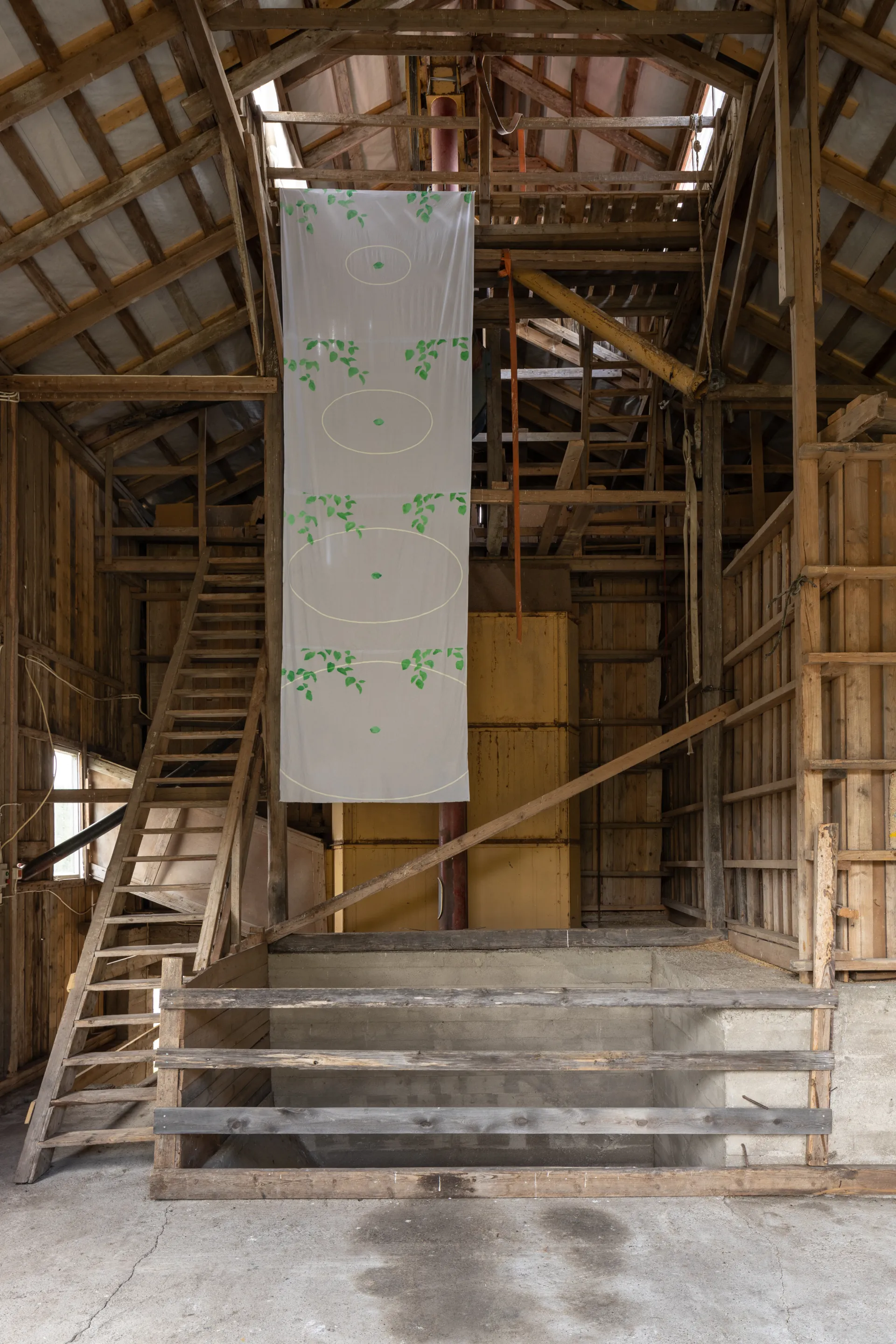Solar Noon, Taattisten Tila


The name of the exhibition, Solar Noon, refers to the moment when the Sun passes a location's meridian and reaches its highest position in the sky. It does not correspond to the 12:00 moment shown by the clock, as the exact moment of solar noon varies as the Earth's rotation and its movements in relation to the Sun are not a constant. The geographical location in a time zone also affects the moment of the average noon.
Human communities have formed different tracking and measuring systems to make the passage of time comprehensible and organised. With industrialisation, the Western world began to follow a time based on the clock instead of the solar cycle or task-based time. However, the precise understanding of time divided into hours, minutes and seconds cannot convey the polyphony of the experience of being in the world, the feeling of its endless simultaneity in the body.
Geologist Marcia Bjornerud has written about developing a habit of timefulness, a feel for the numerous different eras of our planet that are present simultaneously. It is not a feeling of living in a place but many places, where the past, present and future are "palpably present in rocks, landscapes, groundwater, glaciers and ecosystems". According to Bjornerud, a polytemporal worldview could shift the focus of the experience of being in the world. Instead of worrying about the finiteness of life, one might appreciate the rich spectrum of lived experience, simultaneously aware of one’s unicity and cosmic insignificance.
Several layers of natural and cultural environments are active in the landscape of Taattisten tila. The documented history of the old riding stables goes back to the 16th century, and Bronze Age burial mounds can be found close by. The farm's buildings rest on a ground of thick clay, up to tens of metres deep, formed over the course of 9,000 years by the post-glacial land uplift which slowly continues. The area's terrain is an old seabed whose rocky hills were the first to rise above sea level before the clay flowed into their depressions. To paraphrase Bjornerud, every outcrop in the area - a visible exposure of bedrock at the surface of the Earth - is a portal to an earlier world. In the present moment, the outcrops to come, still unpredictable in form, are coming together.
The works of the Solar Noon exhibition settle in a landscape shaped by planetary and human processes. During one summer month, the different materials, rhythms and repetitions of the works form a layer unto the endless movement of the place. Time flows through bodies within the vibration of music, the infinity of plastic, the depth of bedrock and the dance of butterflies.
The exhibition is dedicated to Anna Vihma (1980–2022), who liked the scent of pine, Sheep Polypores and a warm rock under her butt.
Riikka Thitz, curator
Sequence, cotton, dye, bleach, textile paint, thread, wood 140 x 445 cm, 2023
Image credit: Aukusti Heinonen